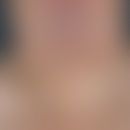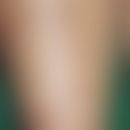HistoryThis section has been translated automatically.
The syndrome was first described in 1886 by the German ophthalmologist August von Rothmund. In 1936, the British physician Matthew Sydney Thomson published two cases of the disease, which later turned out to be identical to Rothmund's first description. The disease was named after both scientists as Rothmund-Thomson syndrome.
DefinitionThis section has been translated automatically.
In English-language literature, Rothmund syndrome and Thomson syndrome are summarized under this term. See also under poikiloderma; see also under genodermatoses, tumor-associated.
Rothmund-Thomson syndrome (RTS) is characterized by poikilodermic skin changes with sparse hair, eyelashes and/or eyebrows. It is also characterized by skeletal and dental abnormalities, juvenile cataracts and an increased risk of cancer, particularly osteosarcoma. A variety of benign and malignant hematologic abnormalities have been reported in affected individuals.
Poikiloderma typically develops between the third and sixth month of life (occasionally as late as two years of age) with erythema, circumscribed swelling and blistering of the face. Later, these characteristic skin changes spread to the buttocks and extremities.
The final stage after months to years is a characteristic poikiloderma pattern with reticular hypo- and hyperpigmentation, telangiectasia and focal atrophy. Hyperkeratotic lesions occur in about one third of those affected. Skeletal anomalies include dysplasia of the radius and ulna, a missing or hypoplastic patella and osteopenia.
You might also be interested in
Occurrence/EpidemiologyThis section has been translated automatically.
Rothmund-Thomson syndrome is a very rare disease (<400 patients are published worldwide). No reliable data are available regarding the prevalence. According to the autosomal recessive mode of inheritance, most cases of RTS are not isolated cases, but occur familially clustered, predominantly in consanguineous families or small communities.
EtiopathogenesisThis section has been translated automatically.
Mutation of the gene RTS, RECQL4, which is mapped on gene locus 8q24.3, with consecutive disruption of the DNA helicase RECQL4 were diagnosed in some of the patients. In a larger collective (n=8) these were 2 patients (25%) mutations (Kaneko H et al. 2022). Other mutations can be assumed, but are not known to date.
ClinicThis section has been translated automatically.
A clinical picture belonging to the RASopathies with poikiloderma in normally intelligent patients, skeletal malformations (saber sheath tibia, small hands and feet, hypoplastic thumbs and dental anomalies), growth retardation, nail dystrophy, hypotrichosis, palmar, more rarely palmar-plantar, predominantly papular hyperkeratosis (see also tumor-associated genodermatoses). Photosensitivity is frequently associated with spinocellular carcinomas and basal cell carcinomas. 50% of patients already show cataract formation in childhood. There is an increased risk of osteosarcoma. It is not uncommon for patients to become clinically conspicuous due to poorly healing wounds.
TherapyThis section has been translated automatically.
Laser: Laser treatment (argon, pulsed dye laser) leads to cosmetic improvements in facial telangiectasia.
Dermabrasio: Only moderate success is achieved by grinding the skin.
Further: Bland skin care e.g. with ash base cream, Linola cream, Eucerin cum aq., if necessary with urea-containing preparations.
Light protection: Textile or chemical/physical light protection with potent sunscreens (SPF > 30, e.g. Anthelios, Contralum ultra), since sun exposure probably increases the skin changes in the long term.
Note(s)This section has been translated automatically.
The distinction between Thomson syndrome and Rothmund-Thomson syndrome is no longer common today. In this respect, the name Rothmund-Thomsonsyndrome has become established. Mutations in the RECQL4 gene are detected in this syndrome, as well as in Baller-Gerold syndrome and RAPADILINO syndrome. Due to the many overlapping signs and symptoms of these syndromes, it is assumed that this is a single genotypically similar syndrome with different phenotypes and overlapping symptoms.
LiteratureThis section has been translated automatically.
- Baller F (1950) Radius aplasia and inbreeding. Z. Menschl. Vererb. Konstitutionsl 29: 782-790.
- Cohen MM et al. (1996) Is there a Baller-Gerold syndrome? (Editorial) Am. J. Med. Genet. 61: 63-64.
- Gerold M (1959) Fracture healing in a rare case of congenital anomaly of the upper limbs. Zbl. Chir. 84: 831-834.
- Kääriäinen H et al. (1989) RAPADILINO syndrome with radial and patellar aplasia/hypoplasia as main manifestations. In: American journal of medical genetics 33: 346-351.
Kaneko H et al. (2022) Rothmund-Thomson syndrome investigated by two nationwide surveys in Japan. Pediatr Int 64:e15120.
- Lu H et al. (2011) Human RecQ helicases in DNA double-strand break repair. Front Cell Dev Biol9:640755.
- Megarbane A et al. (2000) Overlap between Baller-Gerold and Rothmund-Thomson syndrome. Clin. Dysmorph. 9: 303-305.
- Siitonen HA et al. (2003) Molecular defect of RAPADILINO syndrome expands the phenotype spectrum of RECQL diseases. In: Human Molecular Genetics 21: 2837-2844.
- Van Maldergem L et al. (2006) Revisiting the craniosynostosis-radial ray hypoplasia association: Baller-Gerold syndrome caused by mutations in the RECQL4 gene. J Med Genet 43: 148-152.
- Van Maldergem L et al. (2022) In: Adam MP et al. GeneReviews [Internet]. Seattle (WA): University of Washington, Seattle; 1993-2022.
Incoming links (12)
Dyskeratosis congenita; Familial cancer syndrome; Pili anulati; Premature canities; Rapadilino syndrome; Rasopathies (overview); RECQL4 Gene; Reticular hyperpigmentations; Rothmund syndrome; Thomson syndrome; ... Show allOutgoing links (9)
Baller-Gerold syndrome; Familial cancer syndrome; Light protection; Poikiloderma (overview); Rapadilino syndrome; Rasopathies (overview); RECQL4 Gene; Rothmund syndrome; Thomson syndrome;Disclaimer
Please ask your physician for a reliable diagnosis. This website is only meant as a reference.




